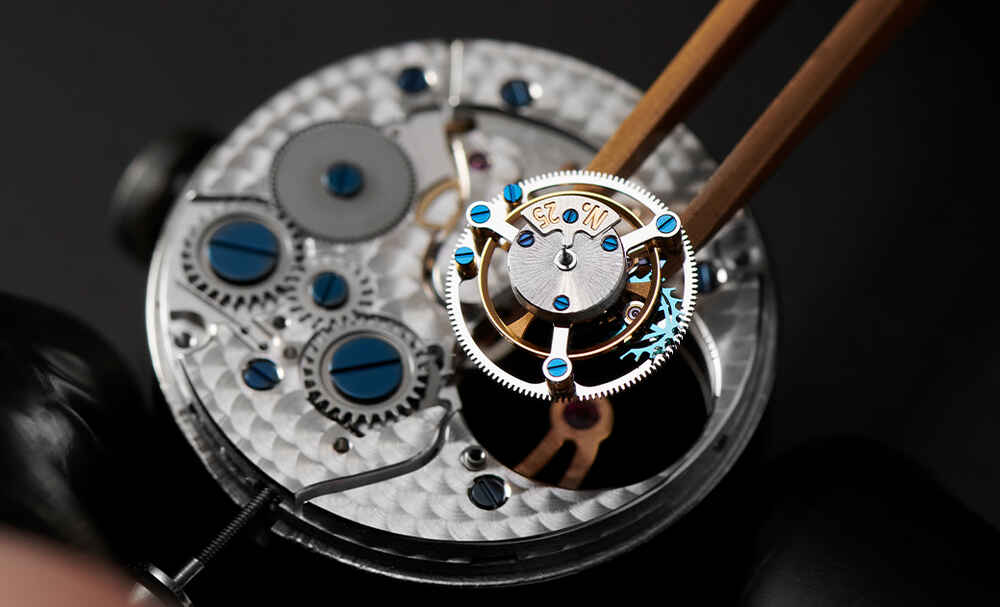The origin and history of the dial
The history of today's dial began in 1300 with the development of the wheel clock. Since clock movements used to be very inaccurate, the first dials often only had a subdivision into hours. Only when the pendulum with rate regulator was invented in the 17th century were clock movements accurate enough to make a subdivision into minutes.
Today, dials come in all imaginable sizes and variations. Dials are not only part of wristwatches, of course - the world's largest dials are located in the Abraj Al Bait Tower in Mecca and have a diameter of 43 meters. The four dials in the hotel tower are thus part of the largest clock in the world.
The dial is often the reflection of the brand and is a component of the watch where a lot of creativity is particularly required. There are no limits when it comes to design, consequently there is an incredible variety in the design of dials: artistically inspired interpretations, the typical pilot's watch design with enlarged Arabic numerals for better legibility, minimalist dials that are completely without indices or numerals, or slightly opulently decorated and ornate variants.
The first glance is usually at the dial of a watch. It is all the more important that the personal style of the wearer is expressed here. Artful ornamentation of dials first appeared in the Baroque era, today you can find a variety of decorated dials made with many different techniques: Engravings, enameling, skeletonization, guilloché, lacquering, set gems, cloisonné and many other techniques can be used in the design of a dial. A good example of this are the models in the Artist collection from Chronoswiss.
Particularly extravagant and eye-catching is an "open dial", which allows the wearer a direct view of the movement and to show the "finissage". With a skeletonized dial, such as the Chronoswiss Skeltec has, the indices are reduced or even omitted altogether to allow an unrestricted view of the movement. Too high and large movements used to be concealed by so-called "cambered dials".
The movements protruded from the case, but were hidden by the domed dial. Nowadays, the movements are small enough, but this form of dials also exudes a certain elegance, which is why this design is sometimes still used.
There is a fascinating variety of manufacturing methods. Depending on the watch manufacturer, model, decorations and other factors, the manufacturing methods vary. Some renowned watch manufacturers have their own production facilities for their dials, others have them made by specialists to exact specifications and receive them for further processing.
The production of a dial is an elaborate process, which unfortunately is rarely given the appropriate attention. With a high striving for perfection, concentration and care, the work steps are mostly carried out by hand and thus make the artisan elaboration in this process clear.
First, the blanks are cut out, which in most cases are stamped out of nickel silver, brass or bronze. In the next step, the holes and recesses for indexes, hands or other displays are milled with CNC machines (computer-controlled, precise machine tools). After cleaning, the dial is provided with so-called "feet", which are welded on with a laser.
These "feet" help to fix the dial to the movement and give it the exact stand. Then the dial is pre-polished and receives another intermediate cleaning. After this step, further finishing and decoration begins, which can vary depending on the design: Mother-of-pearl inlays, sunburst, guilloches and much more.
The dial is given a color application by painting or electroplating. In an oven in the Galavanik department, the color is baked on for one to two hours, depending on the desired color intensity. Sooner or later, all dials reach the printing process. Usually, the so-called pad printing is used for this. This complicated process is ideal for printing fine structures and lines on an uneven surface.
A so-called "tampon," a balloon-shaped, soft cylinder, absorbs ink from engraved depressions, is gently pressed down onto the dial, and in this way prints the dial. Many steps in the manufacturing process are carried out by hand: setting the appliqués, indices or numerals.
These are often equipped with two feet, which are inserted by hand into the holes in the dial. Strict quality control is very important at all stages of the process. Only when each individual dial has been thoroughly checked may it enter the further manufacturing process and complete a wristwatch.
Résumé: The dial is an identity generator of the watch and expresses the individual style of the wearer. The manufacturing process is often underestimated and turns out to be very elaborate and complicated. The incredible variety of dials - due to design, materials and manufacturing processes - makes this watch component something very special.









